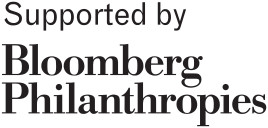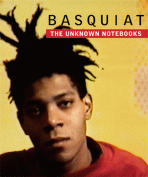
Tamra Davis (American, b. 1962). Still from A Conversation with Basquiat, 2006. 23 min., 22 sec. © Tamra Davis. Courtesy of the artist. By permission of the Estate of Jean-Michel Basquiat, all rights reserved. Photo: Jonathan Dorado, Brooklyn Museum

Tamra Davis (American, b. 1962). Still from A Conversation with Basquiat, 2006. 23 min., 22 sec. © Tamra Davis. Courtesy of the artist. By permission of the Estate of Jean-Michel Basquiat, all rights reserved. Photo: Jonathan Dorado, Brooklyn Museum

Jean-Michel Basquiat (American, 1960–1988). Untitled, 1986. Acrylic, collage, and oilstick on paper on canvas, 941⁄8 x 1362⁄5 in. (239 × 346.5 cm). Collection of Larry Warsh. Copyright © Estate of Jean-Michel Basquiat, all rights reserved. Licensed by Artestar, New York. Photo: Gavin Ashworth, Brooklyn Museum

Jean-Michel Basquiat (American, 1960–1988). Untitled (Crown), 1982. Acrylic, ink, and paper collage on paper, 20 × 29 in. (50.8 × 73.66 cm). Private collection, courtesy of Lio Malca. Copyright © Estate of Jean-Michel Basquiat, all rights reserved. Licensed by Artestar, New York. Photo: Mark-Woods.com
Crowns appeared in Basquiat’s work as early as the SAMO© street writings, and by the early 1980s the three-pointed crown had become a common element in his work. Although other artists also used the crown, this symbol came to be closely identified with Basquiat through his sheer repetition of the image. A shorthand for royalty, heroism, and elevated status, Basquiat’s crowns appear on figures and objects or stand on their own, as in Untitled (Crown). Basquiat reproduced that iconic collage in the monumental silkscreen print Tuxedo.

Jean-Michel Basquiat (American, 1960–1988). Untitled, 1982–83. Oilstick, colored pencil, crayon, and gouache on paper mounted on canvas, 96 × 126 in. (243.8 × 320 cm). Collection of Fred Hoffman. Copyright © Estate of Jean-Michel Basquiat, all rights reserved. Licensed by Artestar, New York
For this work Basquiat produced twenty-eight original drawings and mounted them on canvas in a gridlike arrangement. Layering text and image in a manner reminiscent of graffiti and the free association of his encyclopedic notebook subjects, he created the effect of book pages laid out in sequence. Visible through an abstractly rendered head of an African American male, these language-rich drawings combine scientific diagrams, pictographic notations, bits of world history, and enigmatic references such as THE OBSERVATORY FROM THE JAMES DEAN MOVIE and GORILLA TELEPATHY.

Jean-Michel Basquiat (American, 1960–1988). Untitled (Ideal), 1988. Acrylic and oilstick on canvas, 491⁄2 x 391⁄2 in. (125.7 × 100.3 cm). Estate of Jean-Michel Basquiat. Copyright © Estate of Jean-Michel Basquiat, all rights reserved. Licensed by Artestar, New York

Jean-Michel Basquiat (American, 1960–1988). Untitled Notebook (front cover), 1980–81. Mixed media on board, 95⁄8 x 75⁄8 x 1⁄4 in. (24.4 × 19.4 x .6 cm). Collection of Larry Warsh. Copyright © Estate of Jean-Michel Basquiat, all rights reserved. Licensed by Artestar, New York. Photo: Sarah DeSantis, Brooklyn Museum

Jean-Michel Basquiat (American, 1960–1988). Untitled (Ter Borch), circa 1987–88. Acrylic and oilstick on canvas, 491⁄2 x 391⁄2 in. (125.7 × 100.3 cm). Estate of Jean-Michel Basquiat. Copyright © Estate of Jean-Michel Basquiat, all rights reserved. Licensed by Artestar, New York
Along with Untitled (Ideal), this work is one of a number of Basquiat’s paintings and drawings that resemble his notebook entries, as if the artist had superimposed a page of writing onto a minimally painted canvas. Basquiat often depicted notable works from art history, recasting them as the subjects of his own interpretation.
In this instance he condensed the painting The Flea-Catcher (Boy with His Dog), by the seventeenth-century Dutch Baroque master Gerard ter Borch, to a few lines of text and a simple square. The absence of imagery in Basquiat’s painting plays against Ter Borch’s careful attention to detail at the same time that it implies Basquiat’s respect for the original.

Jean-Michel Basquiat (American, 1960–1988). Untitled Notebook Page, 1980–81. Ink on ruled notebook paper, 95⁄8 x 75⁄8 in. (24.5 × 19.4 cm). Collection of Larry Warsh. Copyright © Estate of Jean-Michel Basquiat, all rights reserved. Licensed by Artestar, New York. Photo: Sarah DeSantis, Brooklyn Museum

Jean-Michel Basquiat (American, 1960–1988). Untitled Notebook Page, circa 1987. Wax crayon on ruled notebook paper, 95⁄8 x 75⁄8 in. (24.5 × 19.4 cm). Collection of Larry Warsh. Copyright © Estate of Jean-Michel Basquiat, all rights reserved. Licensed by Artestar, New York. Photo: Sarah DeSantis, Brooklyn Museum
The copyright symbol appears throughout Basquiat’s notebook texts and larger compositions as a gesture of reclaiming words and ideas for his own use and a comment on consumer culture. The © symbol can be seen on numerous pages in this notebook from about 1987. In the narrative poem A PRAYER, for example, Basquiat alludes to the biblical story of Creation in the book of Genesis with the phrase “IT WAS GOOD”©.

Jean-Michel Basquiat (American, 1960–1988). Untitled Notebook Page, circa 1987. Wax crayon on ruled notebook paper, 95⁄8 x 75⁄8 in. (24.5 × 19.4 cm). Collection of Larry Warsh. Copyright © Estate of Jean-Michel Basquiat, all rights reserved. Licensed by Artestar, New York. Photo: Sarah DeSantis, Brooklyn Museum
Basquiat: The Unknown Notebooks
April 3–August 23, 2015
Brooklyn-born artist Jean-Michel Basquiat filled numerous notebooks with poetry fragments, wordplay, sketches, and personal observations ranging from street life and popular culture to themes of race, class, and world history. The first major exhibition of the artist’s notebooks, Basquiat: The Unknown Notebooks features 160 pages of these rarely seen documents, along with related works on paper and large-scale paintings.
A self-taught artist with encyclopedic and cross-cultural interests, Basquiat was influenced by comics, advertising, children’s sketches, Pop art, hip-hop, politics, and everyday life. Basquiat: The Unknown Notebooks emphasizes the distinct interplay of text and images in Basquiat’s art, providing unprecedented insight into the importance of writing in the artist’s process. The notebook pages on display contain early renderings of iconic imagery—tepees, crowns, skeleton-like figures, and grimacing faces—that also appear throughout his large-scale works, as well as an early drawing related to his series of works titled Famous Negro Athletes.
Basquiat: The Unknown Notebooks is organized by the Brooklyn Museum and is curated by Dieter Buchhart, guest curator, with Tricia Laughlin Bloom, former Associate Curator of Exhibitions, Brooklyn Museum. A fully illustrated catalogue accompanies the exhibition.





